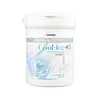What's inside
What's inside
 Key Ingredients
Key Ingredients

 Benefits
Benefits

 Concerns
Concerns

 Ingredients Side-by-side
Ingredients Side-by-side

Water
Skin ConditioningGlycerin
HumectantNiacinamide 2%
SmoothingDipropylene Glycol
HumectantHydroxyacetophenone
AntioxidantArginine
MaskingCarbomer
Emulsion StabilisingSodium Ascorbyl Phosphate
AntioxidantPolyglyceryl-10 Laurate
Skin ConditioningPolyglyceryl-4 Laurate
EmulsifyingAllantoin
Skin ConditioningHydroxyethylcellulose
Emulsion StabilisingCaprylyl/Capryl Glucoside
CleansingButylene Glycol
HumectantCaprylyl Glycol
EmollientDisodium EDTA
Parfum
Masking1,2-Hexanediol
Skin ConditioningSodium Hyaluronate
HumectantWater, Glycerin, Niacinamide 2%, Dipropylene Glycol, Hydroxyacetophenone, Arginine, Carbomer, Sodium Ascorbyl Phosphate, Polyglyceryl-10 Laurate, Polyglyceryl-4 Laurate, Allantoin, Hydroxyethylcellulose, Caprylyl/Capryl Glucoside, Butylene Glycol, Caprylyl Glycol, Disodium EDTA, Parfum, 1,2-Hexanediol, Sodium Hyaluronate
 Reviews
Reviews

Ingredients Explained
These ingredients are found in both products.
Ingredients higher up in an ingredient list are typically present in a larger amount.
Allantoin is a soothing ingredient known for its protective and moisturizingg properties. Because of this, it is often added to products with strong active ingredients.
Studies show higher concentrations of this ingredient can promote wound healing.
Though it can be derived from the comfrey plant, allantoin is produced synthetically for cosmetic products to ensure purity.
Learn more about AllantoinParfum is a catch-all term for an ingredient or more that is used to give a scent to products.
Also called "fragrance", this ingredient can be a blend of hundreds of chemicals or plant oils. This means every product with "fragrance" or "parfum" in the ingredients list is a different mixture.
For instance, Habanolide is a proprietary trade name for a specific aroma chemical. When used as a fragrance ingredient in cosmetics, most aroma chemicals fall under the broad labeling category of “FRAGRANCE” or “PARFUM” according to EU and US regulations.
The term 'parfum' or 'fragrance' is not regulated in many countries. In many cases, it is up to the brand to define this term.
For instance, many brands choose to label themselves as "fragrance-free" because they are not using synthetic fragrances. However, their products may still contain ingredients such as essential oils that are considered a fragrance by INCI standards.
One example is Calendula flower extract. Calendula is an essential oil that still imparts a scent or 'fragrance'.
Depending on the blend, the ingredients in the mixture can cause allergies and sensitivities on the skin. Some ingredients that are known EU allergens include linalool and citronellol.
Parfum can also be used to mask or cover an unpleasant scent.
The bottom line is: not all fragrances/parfum/ingredients are created equally. If you are worried about fragrances, we recommend taking a closer look at an ingredient. And of course, we always recommend speaking with a professional.
Learn more about ParfumSodium Hyaluronate is hyaluronic acid's salt form. It is commonly derived from the sodium salt of hyaluronic acid.
Like hyaluronic acid, it is great at holding water and acts as a humectant. This makes it a great skin hydrating ingredient.
Sodium Hyaluronate is naturally occurring in our bodies and is mostly found in eye fluid and joints.
These are some other common types of Hyaluronic Acid:
Learn more about Sodium Hyaluronate